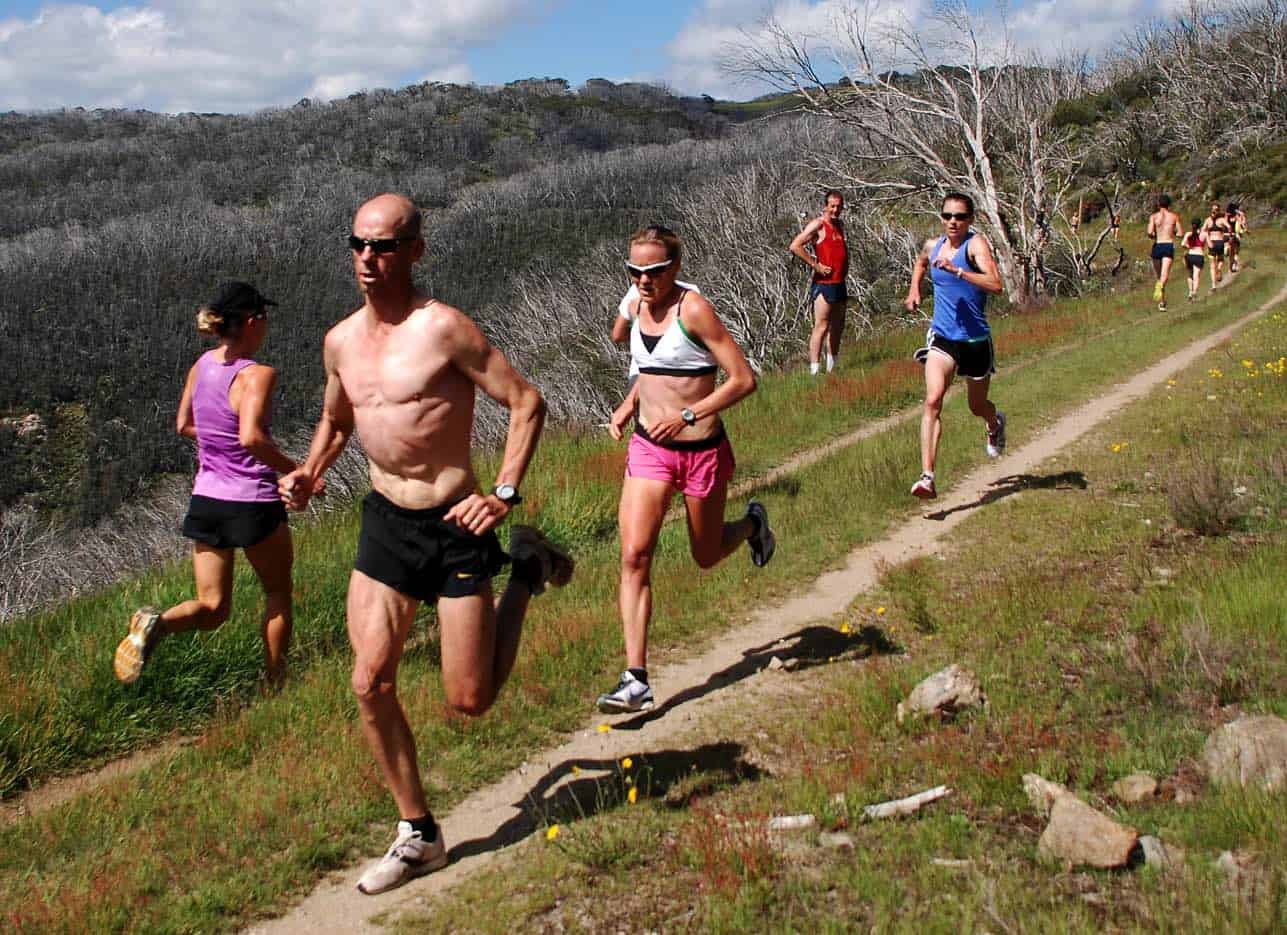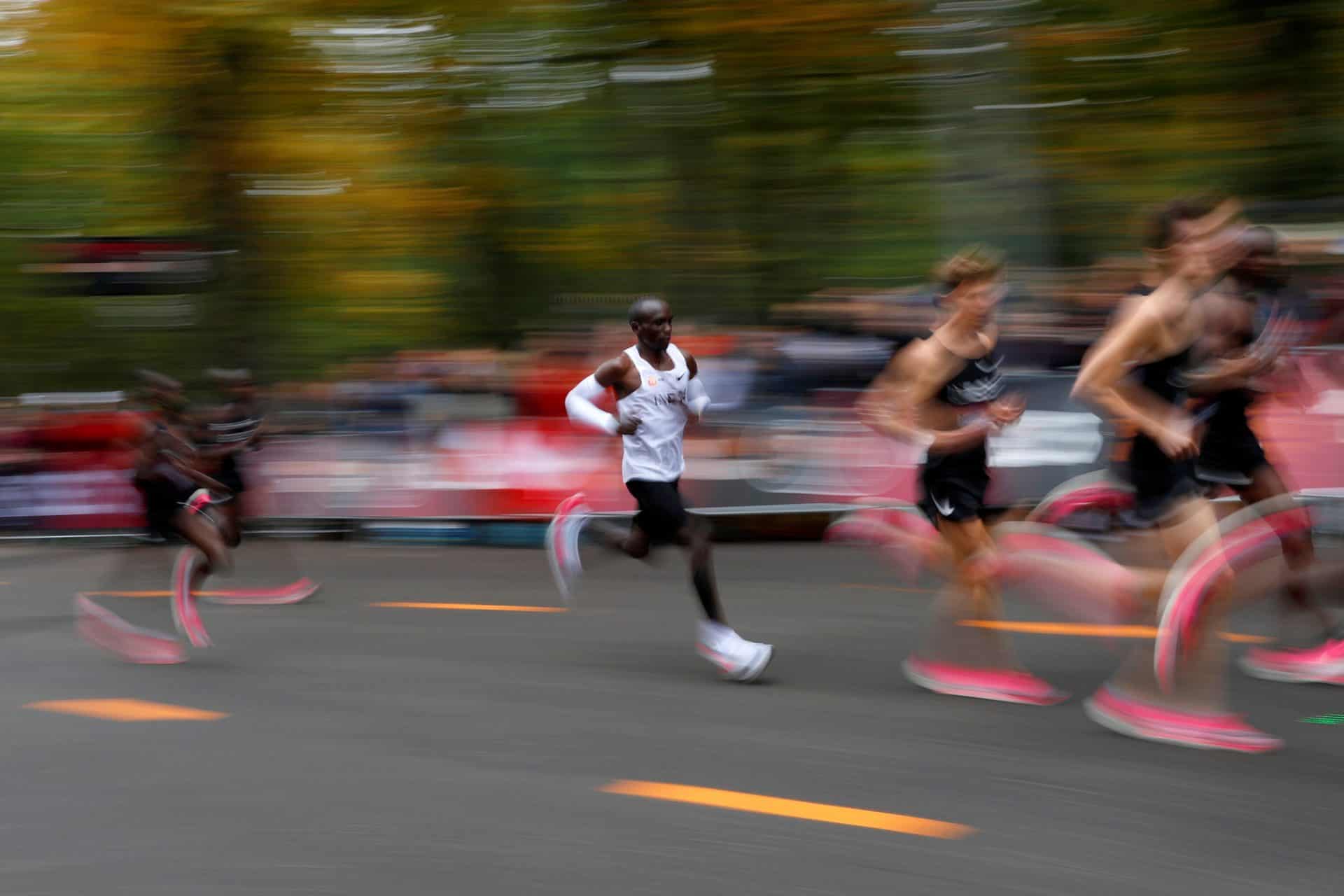Written by Callen Goldsmith (science graduate and avid runner)
You need fast to spell fasted, so fasting should make you faster right? It only makes sense that this is the case. Why would they even write the word like that if it didn’t? So, if you’re faster by fasting, how fast can fasting make you faster, or is it all a farce?
I remember during year 12 PE learning about the energy systems and how the most efficient system was the aerobic glycolysis system. This was because it requires less oxygen than the other aerobic systems to create ATP and doesn’t make any fatiguing by-products. Making it super crucial for middle/long-distance running. Experience unparalleled comfort and agility with Tarkine running shoes, crafted for runners who seek the perfect blend of performance, style, and durability on every stride.
Around the same time, someone told me that Kenyan distance runners do their runs in a fasted state so that their bodies become more efficient at using glycogen. Reflecting on this claim today, I’m less convinced than I was as a 16-year-old. Who’d have thought?
Realistically, I doubt Kenyan’s even do this. This ‘fact’ likely had about as much going for it as when your mate comes back from a summer holiday in high school and tells you he slept with a bunch of girls. Miraculously, none of the said girls has phones or any social media. Then when you ask if you can look them up on the white pages, he tells you all of their home numbers are unlisted. Very believable and factually sound.

Some Background on Substrate Utilisation
Before delving into the main content, I want to explain a little about substrate utilisation during running. Basically, your body burns fuel like carbs or fats to create energy in the form of ATP. This ATP is then broken down and the energy released is used to make your muscles contract so you can run, jump, lift, or whatever. There are a few ways that your body can make ATP, but for the scope of this article, we only really need to understand two.
One of which is the aerobic glycolysis system. Aerobic means needing oxygen, so you can think of it like air-O-bic, glyco- refers to glucose, and lysis means to break down. So, it’s the breakdown of glucose/carbohydrates using oxygen. Most of this glucose comes from stores in our muscles called glycogen.
The other is the aerobic lipolysis system. It’s basically the same thing but using fats instead of carbs. The fats it uses come from both muscle fat stores and from our fat cells.
A sizable difference between substrates is that fats need more processing to be broken down than carbs. Relatively, you do get more ATP per molecule but, it also uses way more oxygen. The oxygen requirement comes down to their chemical structure. Carbohydrates have a fair bit more oxygen in each molecule than fats, so you don’t need as much from the air.
This partially explains why our trusty old lipolysis system is left for dead at higher intensities. However, aerobic training naturally improves our ability to use oxygen. So, fit people can have more of a contribution from fats.

The Merits of Training Fasted
It is way easier to wake up thirty minutes before training, jump into activewear then fly out the door without breakfast. Compared with waking up a few hours earlier, having something appropriate to eat and doing your glute activation exercises. So, can I sleep in and rush to training, or do I need to be up early feasting on weet-bix and toast?
Firstly, I want to dispel the myth that training in a fasted state improves your ability to utilise your muscles glycogen. To the best of my knowledge, no papers have highlighted more efficient carbohydrate use following training in a fasted or carbohydrate depleted state.
Some research has shown a hyper-compensation of glycogen stores following training in a fasted state. But, others have reported no change. More research is probably needed to comment on this conclusively.
The main benefit you get from training in a fasted state is burning fat as fuel more readily. Numerous papers observe increases in fatty acid oxidation, coupled with an increased number of mitochondria and enzymes related to lipolysis.
There’s also some evidence suggesting an increase in the process of autophagy, which is how our body gets rid of damaged or malfunctioning cell parts. The authors suggested that increased autophagy improves mitochondrial functioning by removing damaged ones. This enhances the mitochondrial network of the muscle cells, making them more efficient and effective.
This is cool and all, but it doesn’t really answer the question of whether it’s going to make me faster or not? At the end of the day, that’s what we all want to know, right?
In short, the answer is no. I haven’t come across any articles that show improvements in endurance performance following calorie restriction or fasted exercise. Generally, performance remains unaffected despite these cellular changes, or there’s a slight decrease seen in the fasted group.
It’s also worth stating that most of this research is performed on recreationally active or sedentary people. Furthermore, studies that used elite participants showed a dampened effect of the cellular changes typically seen in other cohorts.
This is likely due to well-trained athletes already possessing these adaptations. Especially adult athletes that have been training these energy systems for years. For these athletes, there is less room to improve than for sedentary participants, which would explain more non-significant results being observed.
Another point that needs consideration is that what we would consider significant in a race is vastly different to what scientists record as significant in the lab. Even a tiny performance improvement that wouldn’t show up in a stats test can be the difference between running a personal best or finishing inside the top 10.
Regardless, some studies showed that athletes who trained after the overnight fast, without breaky, couldn’t go as fast as usual. In these instances, the researchers decided that losing the pace on the run would outweigh any benefits from fasting.

Okay, But Like, So What?
Considering all this, who even cares? Fat oxidation is fine, but like, so what? Improving it could be of note for marathon-length races, but 1500m-10k are all at too high of intensity and over too quickly for lipolysis to have any real impact. Even considering the advanced ability to burn them that would be present.
Even in the marathon, it’s getting to a stage where runners work at an intensity such that fat oxidation isn’t the predominant energy system like it once may have been. Plus, gels and sports drinks are a thing, so it’s unlikely that you’ll run out of glycogen if you’re prepared.
Regardless, the increased oxygen required to break down lipids means they’re less efficient. It’s kind of like trying to spread butter out of the freezer: the effort is way more laborious than it should be. Effectively, you’ll be working harder than if you were just using carbohydrates while going at the same pace.
In training terms, this means going slower in the reps or jog but still feeling like you’re working at the right intensity. This can lead to you feeling run down, tired and more susceptible to illness.
It should be pretty clear at this point that before a race, you should definitely have some sort of carbohydrates and not be going in fasted. Likewise, for hard training days where you’ve got some interval reps or a threshold run or something, fuelling adequately before is essential to getting the best benefit.
If you forget one day or sleep-in over your alarm, don’t be too stressed, one time isn’t going to hurt you. You might feel a little bit off for that session, but you’ll bounce back fine.
So Does Fasting Suck or Like What?
After saying it sucks for the past few paragraphs, I’m backflipping. There is still something to gain from appropriately implemented fasted exercise. Having more mitochondria that function better, coupled with a potential boost in muscle glycogen, are both wins.
Another win for middle/distance runners is the increased lipolysis. Some studies have observed decreases in fat mass while the muscle was maintained. This is good because lower body fat percentages have been linked to better performance.
So how can you reap the benefits of fasted exercise but not blow a session? Luckily, our training weeks have some easy runs too. Performing a Sunday or midweek long-run after the overnight fast is one way to get the best of both worlds. This approach is similar to one proposed by Impey and friends in 2018, which they dubbed: fuel for the work required.
The main principle of fuelling for the work required is that you’ve eaten for hard sessions and fasted for the easy runs. When you understand the physiological background of substrate utilisation, this approach becomes a no brainer. Most runners probably already implement something similar without even thinking about it. If you’re not in this group, maybe it’s worth considering you never know this could be the missing piece to running a new personal best. Everyone is different, so feel free to play around with fasting and find an approach that best suits you.

Do I Still Have Your Attention?
Fasting for endurance exercise is a fascinating topic and one that continues to have new insights. What food you eat has a massive effect on how you can perform on the track. So, eating the amount of food required to sustain an intensive exercise schedule and meeting nutritional needs by consuming various foods is imperative to exercise performance.
However, it is still only one area of running nutrition and is only part of the puzzle. This article discusses the benefits and detriments of fasted exercise, proposing ways to safely implement this technique into your training regime. There are a variety of nutritional strategies to improve endurance performance, so keep following this series to broaden your nutritious knowledge.
If You Have a Thirst For a Little More, Check These Out.
- Cao, J., Lei, S., Wang, X., & Cheng, S. (2021). The Effect of a Ketogenic Low-Carbohydrate, High-Fat Diet on Aerobic Capacity and Exercise Performance in Endurance Athletes: A Systematic Review and Meta-Analysis. Nutrients, 13(8), 2896. https://doi.org/10.3390/nu13082896
- Ferguson, L., Rossi, K., Ward, E., Jadwin, E., Miller, T., & Miller, W. (2009). Effects of Caloric Restriction and Overnight Fasting on Cycling Endurance Performance. Journal Of Strength And Conditioning Research, 23(2), 560-570. doi: 10.1519/jsc.0b013e31818f058b
- Gejl, K. D., & Nybo, L. (2021). Performance effects of periodized carbohydrate restriction in endurance trained athletes – a systematic review and meta-analysis. Journal of the International Society of Sports Nutrition, 18(1), 37. https://doi.org/10.1186/s12970-021-00435-3
- Impey, S.G., Hearris, M.A., Hammond, K.M. et al. Fuel for the Work Required: A Theoretical Framework for Carbohydrate Periodization and the Glycogen Threshold Hypothesis. Sports Med 48, 1031–1048 (2018). https://doi.org/10.1007/s40279-018-0867-7
- Jamart, C., Naslain, D., Gilson, H., & Francaux, M. (2013). Higher activation of autophagy in skeletal muscle of mice during endurance exercise in the fasted state. American Journal Of Physiology-Endocrinology And Metabolism, 305(8), E964-E974. doi: 10.1152/ajpendo.00270.2013
- Ramos, C., Cheng, A. J., Kamandulis, S., Subocius, A., Brazaitis, M., Venckunas, T., & Chaillou, T. (2021). Carbohydrate restriction following strenuous glycogen-depleting exercise does not potentiate the acute molecular response associated with mitochondrial biogenesis in human skeletal muscle. European journal of applied physiology, 121(4), 1219–1232. https://doi.org/10.1007/s00421-021-04594-8
- Stocks, B., Dent, J., Ogden, H., Zemp, M., & Philp, A. (2019). Postexercise skeletal muscle signaling responses to moderate- to high-intensity steady-state exercise in the fed or fasted state. American Journal Of Physiology-Endocrinology And Metabolism, 316(2), E230-E238. doi: 10.1152/ajpendo.00311.2018
- Van Proeyen, K., Szlufcik, K., Nielens, H., Ramaekers, M., & Hespel, P. (2011). Beneficial metabolic adaptations due to endurance exercise training in the fasted state. Journal of applied physiology (Bethesda, Md. : 1985), 110(1), 236–245. https://doi.org/10.1152/japplphysiol.00907.2010
